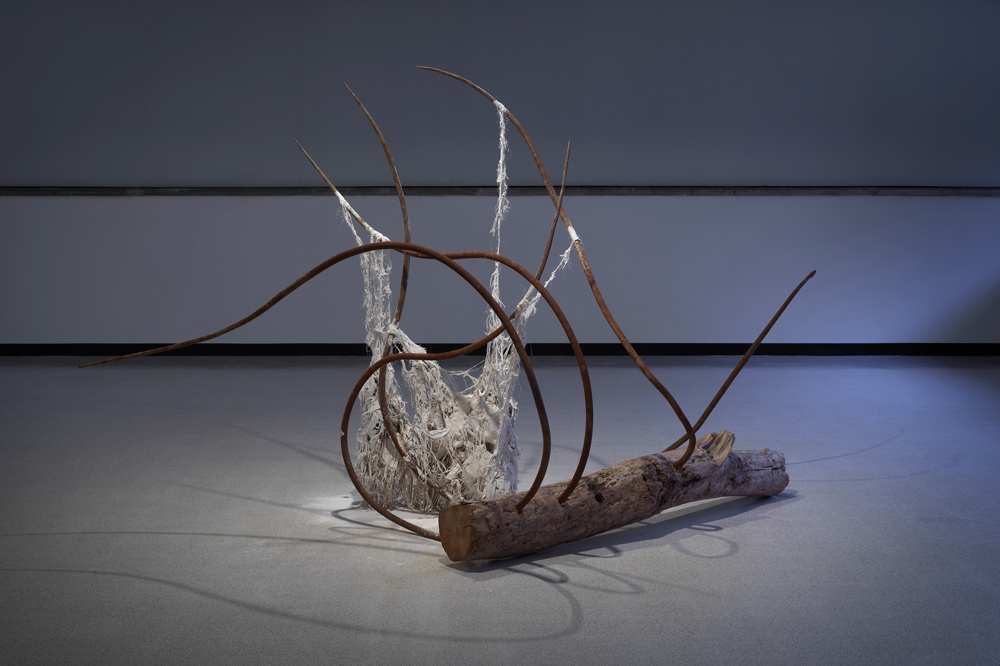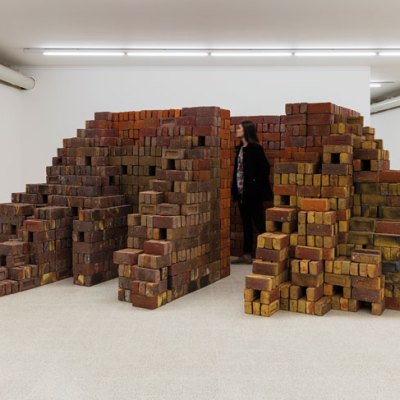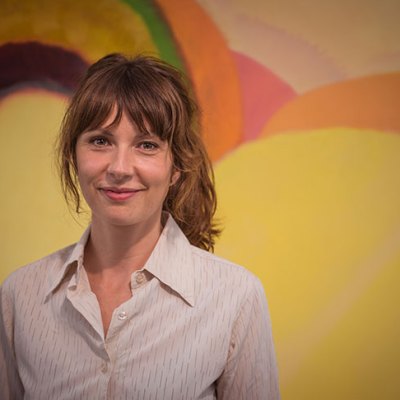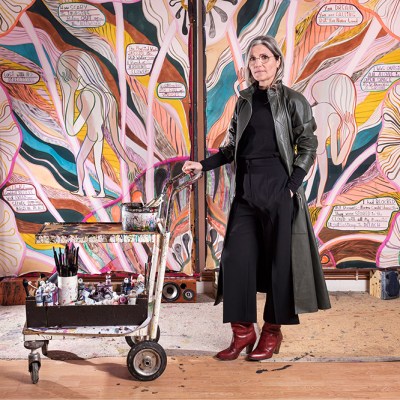Reggio Emilia, a Turin-based friend tells me when discussing my upcoming trip there, claims to be the ‘home of parmesan cheese, the Italian flag and Max Mara’. That the latter has become synonymous with city is unsurprising: the brand has been operating there since it was founded by Achille Maramotti in 1951 and its original headquarters were 10 minutes from centre of the old town.
Today, Max Mara HQ occupies a newer site towards the city’s outskirts, having outgrown its former home in 2003. The original warehouse, however, is still an important part of the Maramotti legacy. In 2007, the British architect Andrew Hapgood transformed the space that is now Collezione Maramotti, designed to house Achille’s collection of works by Italian and international artists from 1945 to today. Some 200 of these are a permanent fixture in the airy upper-floor galleries, just a fraction of a vast collection of paintings, sculptures and installations.
Though Achille Maramotti died two years before the space opened to the public, the collection keeps on growing. Following Achille’s wishes, it still supports emerging artists, most notably in recent years through the Max Mara Art Prize for Women. The prize, a collaboration between Max Mara, the Collezione Maramotti and the Whitechapel Gallery in London, is awarded biennially to a female-identifying artist based in the United Kingdom and involves a six-month residency in Italy. This culminates in a solo exhibition – a first for the artist in question.
Installation view of the exhibition Deadweight (2024) by Dominique White at the Collezione Maramotti, Reggio Emilia. Photo: Dario Lasagni; © the artist

The ninth winner of the award is Dominique White, whose exhibition ‘Deadweight’ is now on display in a large gallery on the collection’s ground floor. Stepping into the sparsely lit space is rather like being submerged in the ocean, as beams of light break through the surface to illuminate four large-scale sculptures. This suggestion of the sea is an important part of White’s work, which explores the history of the transatlantic slave trade and colonisation and their effect on modern Blackness. For White, as she explains in the accompanying catalogue, the sea symbolises a ‘fantastical and unfathomable’ Black future, or Afrofuture, free from societal constraints and sufferings that might prevail on land.
Through tangled constructions of salvaged rope, raffia, sisal, clay and tattered sails, which hang off twisting iron prongs that curve like the exposed ribs of a marine mammal’s carcass, works such as the swelling enemy and split obliteration (both 2024) resemble the remains of a shipwreck. The idea of a wrecked vessel is at the heart of ‘Deadweight’, the title referring to the net weight that a ship can safely carry. White inverts the purpose of this measurement, her work instead directed towards the tipping point at which a slave ship can be sunk, freeing its human cargo in the process. This sense of emancipation is also informed by the notion of hydrarchy, a term coined by poet Richard Braithwaite in the 17th century that refers to the power that can be gained through control of the seas. White turns this notion on its head, too, by wrecking the enslaving ship, dissolving the on-board hierarchy and releasing the most oppressed.
Installation view of split obliteration (2024) by Dominique White at the Collezione Maramotti, Reggio Emilia. Photo: Dario Lasagni; © the artist

White says that, during her residency, she was inspired by what she found in the fishing villages near Genoa. She became ‘obsessed’ with abandoned anchors on the shores of the coastal city, and her fascination with the rusted exterior of the weighty objects, oxidised over time by sea water, is evident in the exhibition. She submerged the iron tendrils of each sculpture in the Mediterranean until they too developed a salt-bitten exterior. In ineligible for death (2024), corroded prongs impale ashen driftwood logs and jut out like harpoons. They are at once fragile and threatening, warning of mutual destruction should a viewer wander too close. This defensiveness carries through to dead reckoning (2024), which sits at the centre of the low-lit display. Made from talons of forged iron – often the only material to have survived from slave ships – the pared-back sculpture shows cautious hope for a future that ‘escapes from the hull’, with the troubled past lingering only in decaying relics.
When the exhibition closes in mid February, the four works and White’s version of an alternative future will become part of the Collezione Maramotti. Fashion is sometimes considered ephemeral but this exhibition, and the broader collection, are of enduring value.
Installation view of ineligible for death (2024) by Dominique White at the Collezione Maramotti, Reggio Emilia. Photo: Dario Lasagni; © the artist

‘Deadweight’ is at the Collezione Maramotti, Reggio Emilia, until 16 February 2025.



